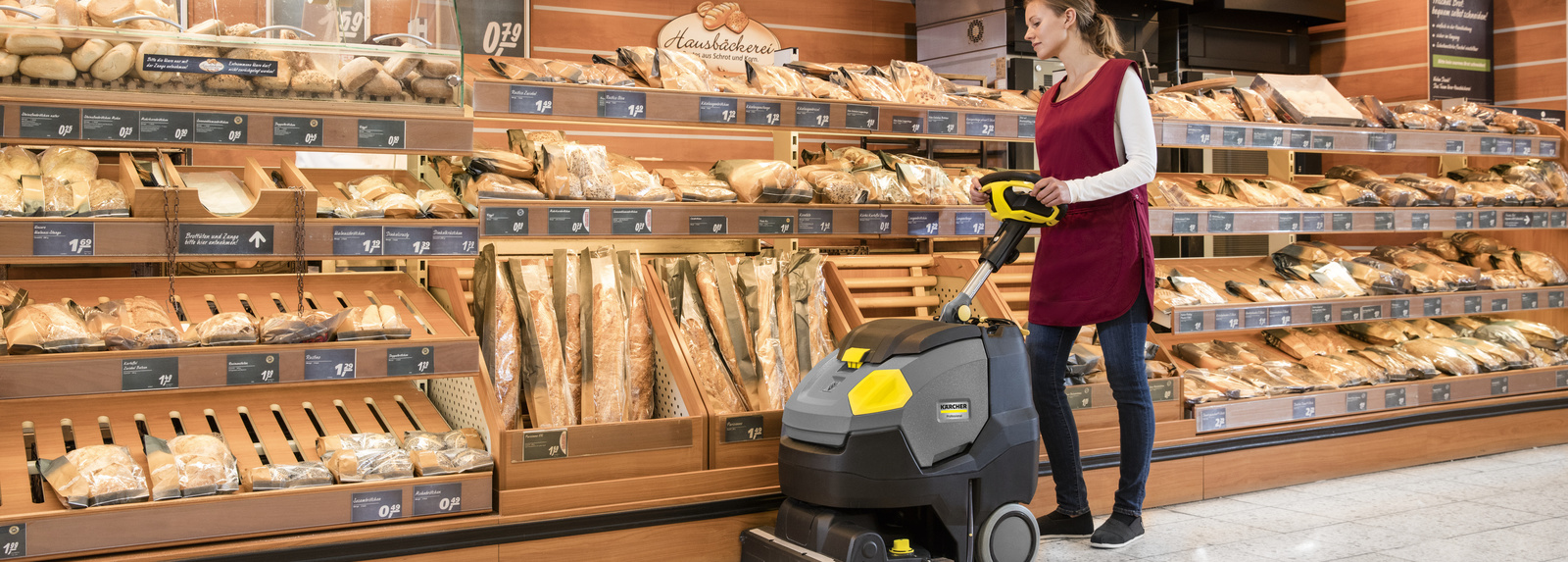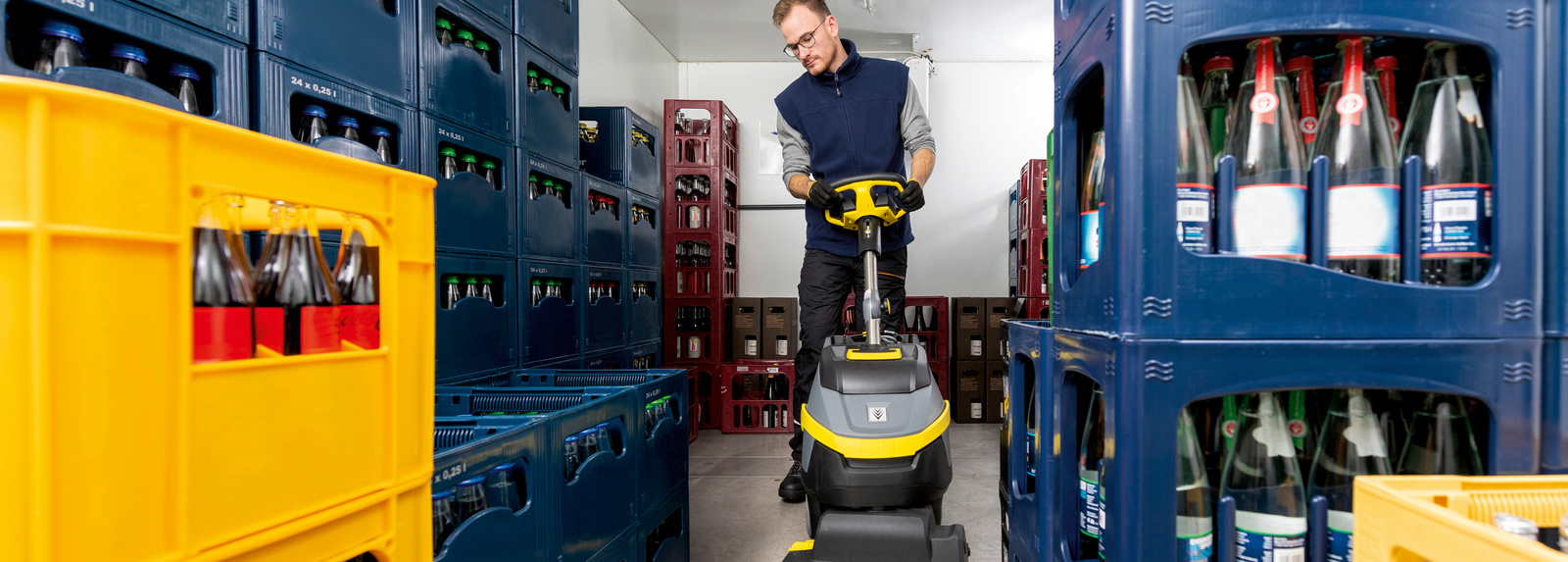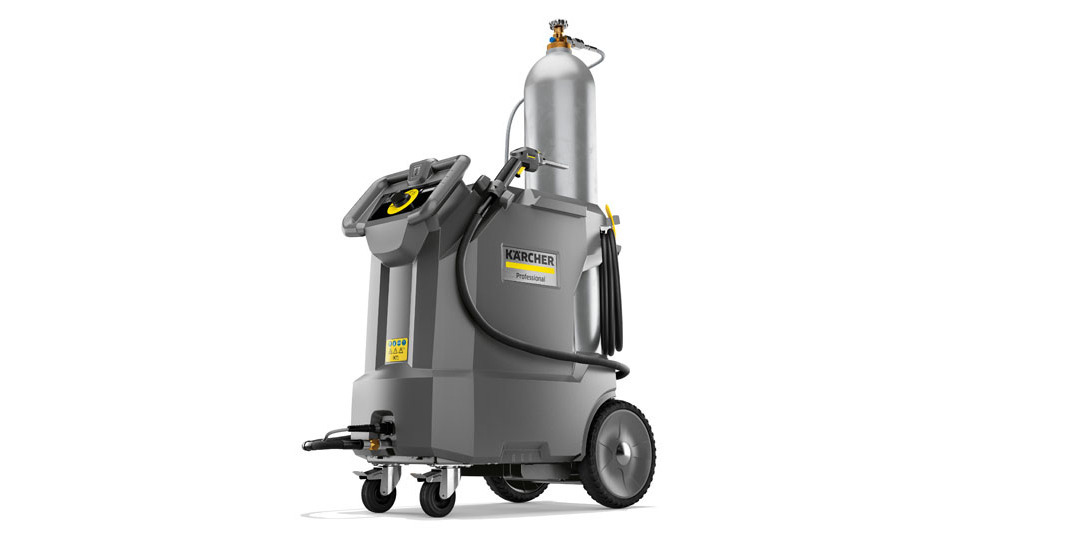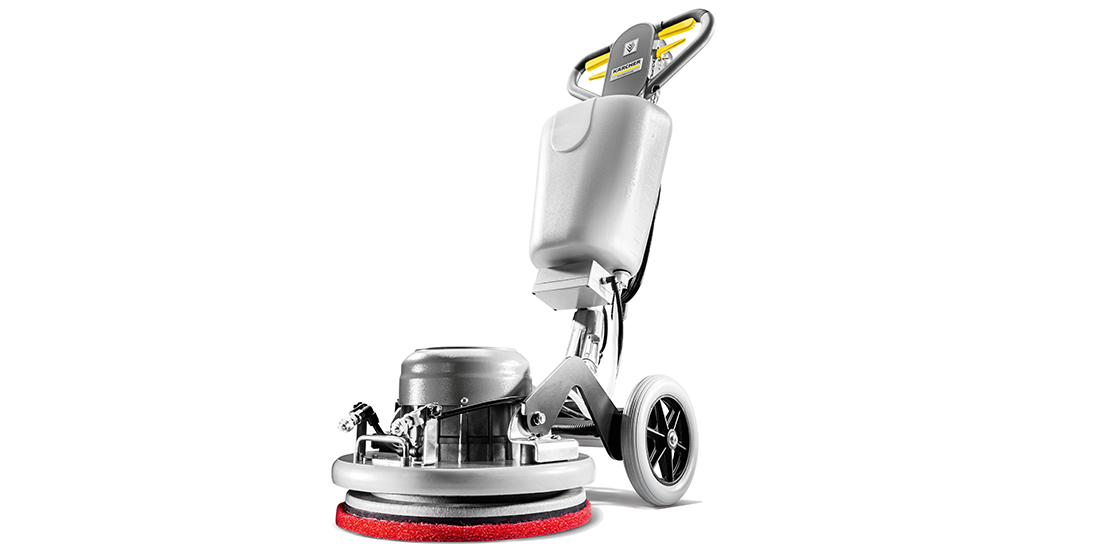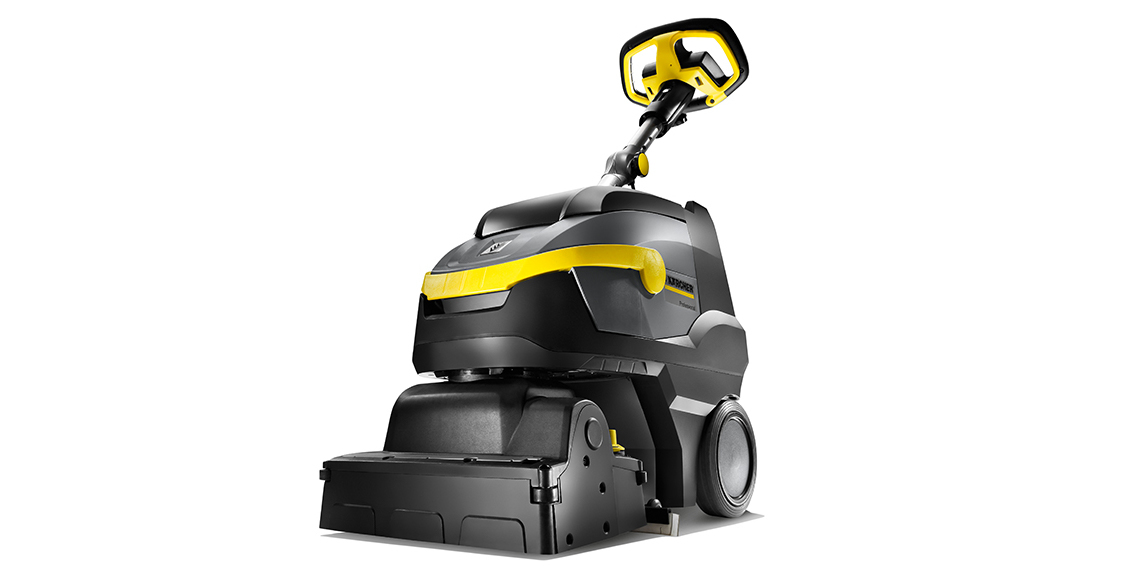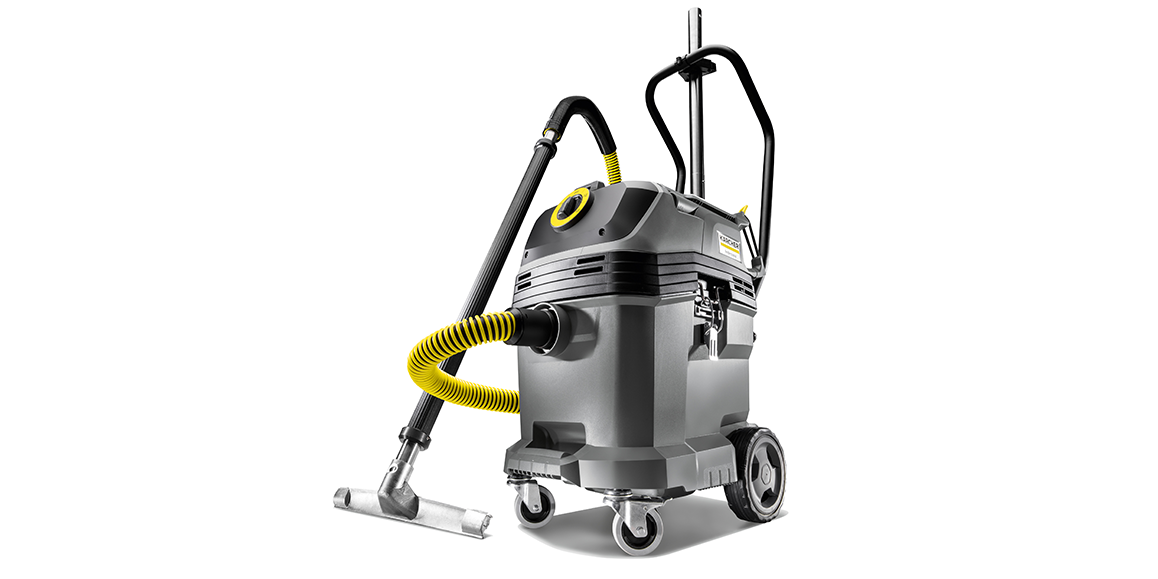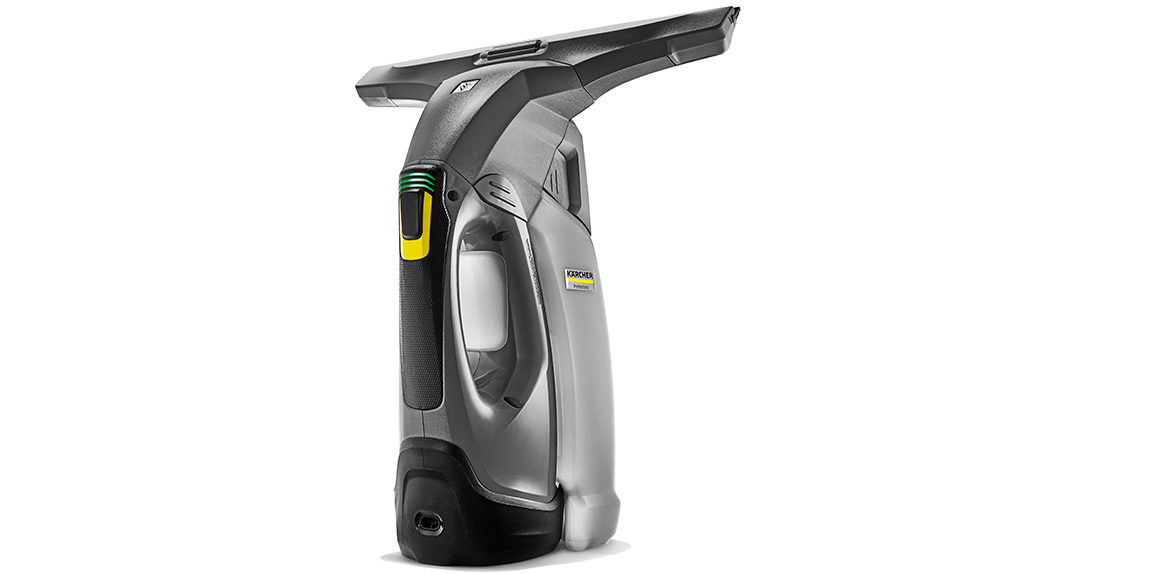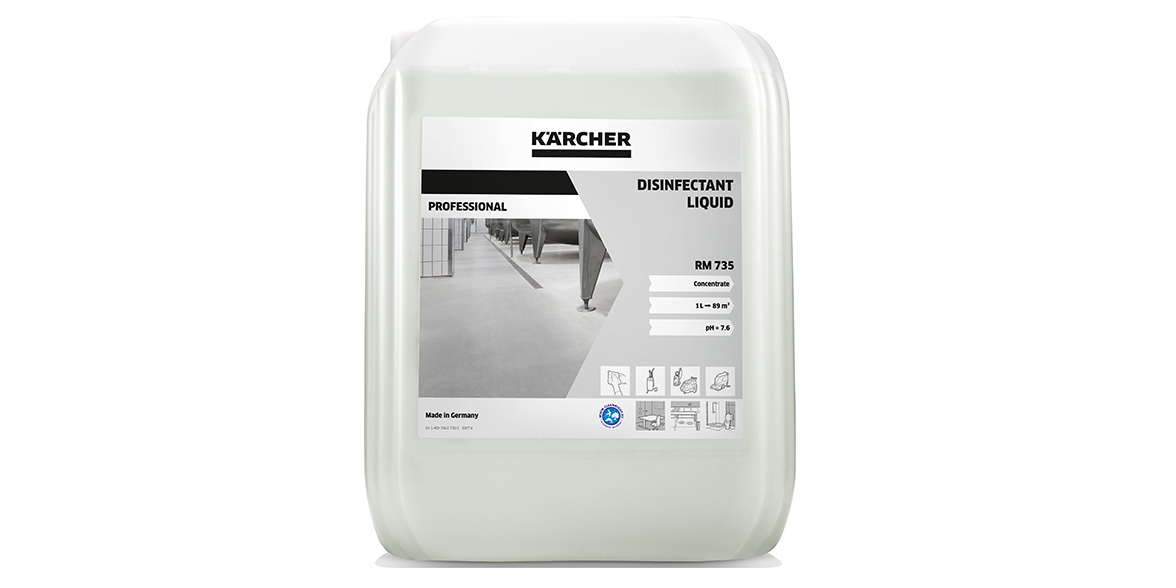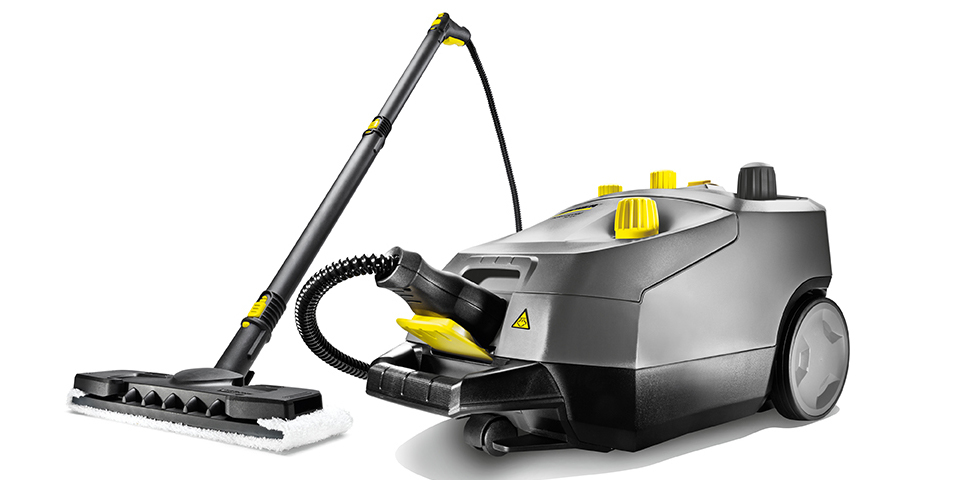Bakery Hygiene rules: How to clean a bakery
Strict cleanliness and hygiene standards apply when working with and selling food. In addition to consumer safety, professional and efficient cleaning leaves an overall positive impression and helps to maintain hygiene and safety when working in a bakery or cake shop. However, there are some specific tasks that need to be completed, that require the appropriate technology and approach.
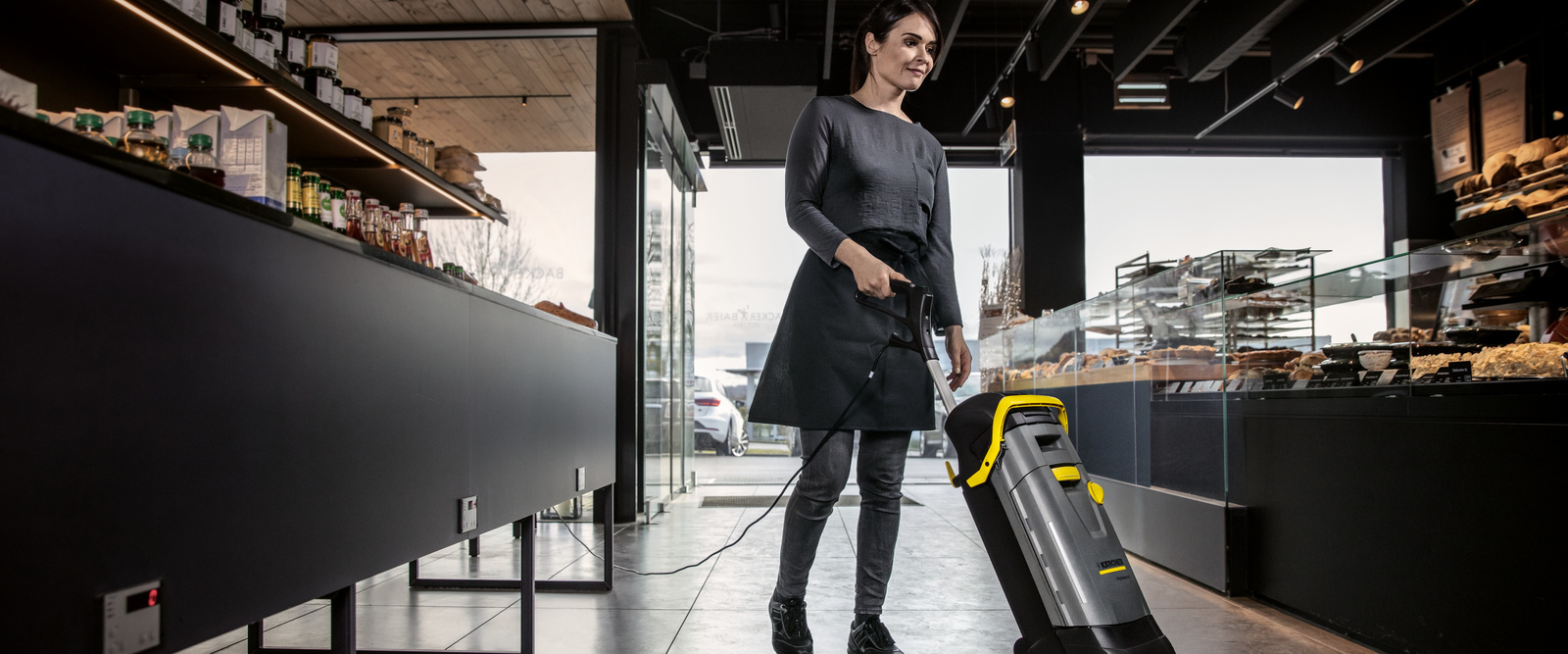
Hygiene on the shop floor of the bakery and cake shop
Cleanliness and welcoming customers
These days, bakeries and cake shops are no longer just places to buy a loaf of bread or a cake from. They often also include takeaway coffee, cake for the next family birthday, or a café. It is therefore all the more important that businesses ensure hygiene within the bakery or cake shop through appropriate hygiene measures, to ensure a pleasant environment for their customers.
Cleaning the counter and contact surfaces
The surface of the glass sales counter needs to be cleaned periodically, as fingerprints or other dirt become visible very quickly. To remove them, you can use a glass cleaner and a microfibre cloth. If the surfaces are straight rather than curved, a professional window cleaning kit can simplify and speed up the work. If a disinfectant is used, do not wipe the surfaces down after application in order to maintain the disinfecting properties.
Tip – only disinfect clean surfaces:
Only clean surfaces can be disinfected. If there are other contaminants on the surface, the disinfectant will concentrate on them, and its performance will no longer be guaranteed. This should be kept in mind when cleaning and disinfecting surfaces in the bakery that come into contact with skin.
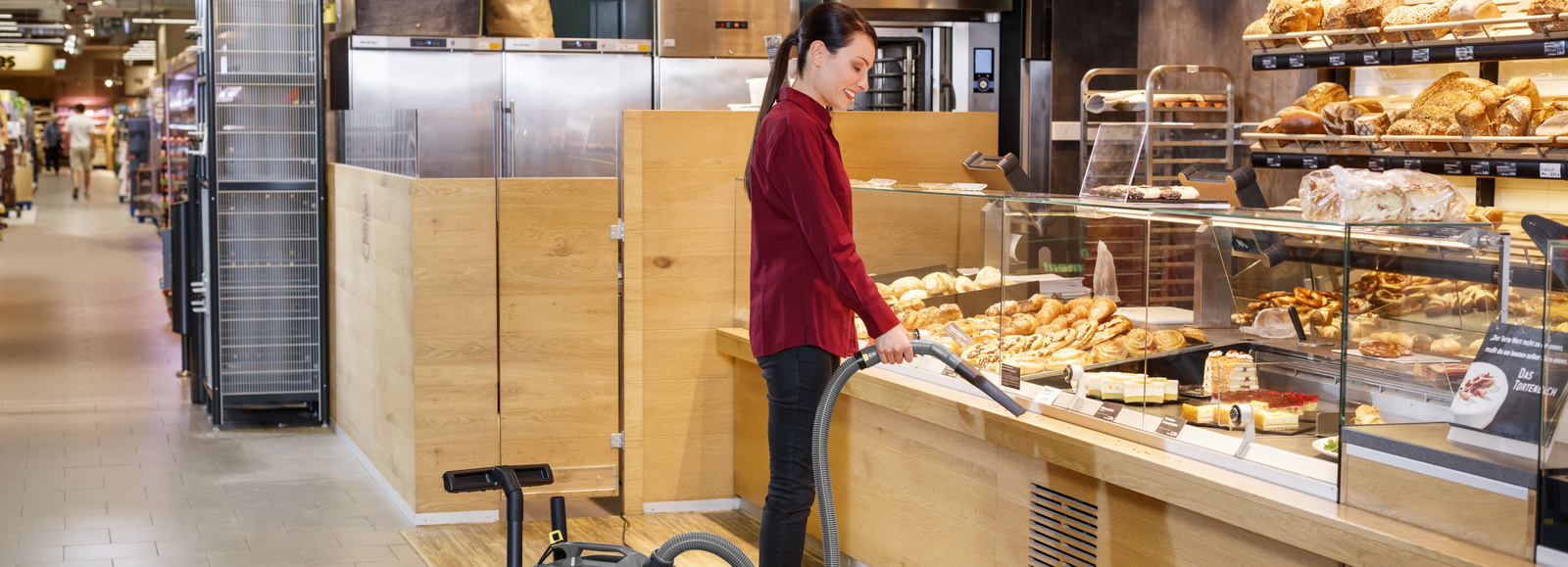
Cleaning outer and inner surfaces of the counter
When it comes to cleaning the other side of the counter, cleaning techniques that are used when handling food play a significant role. A wet/dry vacuum can be used to easily and quickly remove dry, loose food from the display counter. When wet cleaning, use alternating alkaline and acidic cleaning agents to reliably remove the breeding ground for microorganisms. After cleaning and disinfecting, rinse with clean water to ensure that no residue remains.
A chemical-free alternative is to work with professional steam cleaners. They reliably eliminate germs, bacteria, and viruses. This is because hot steam up to approximately 100 °C and with a pressure of up to 4 bar emerges from the nozzle in very fine droplets. Read the manufacturer's instructions thoroughly to ensure the proper use.
Cleaning the sales area: clean and hygienic
Eating healthy and living healthy is essential and people are placing more importance on what lands on their plates. Whether it is fresh produce from the famers market or a quick healthy midday snack on the go from the local café, one thing is sure: The food hygiene standards must be excellent. The basis for this is a clean and hygienic work environment.
Cleaning bakery
Bakery hygiene and occupational safety in focus
As well as daily bakery cleaning, it is important to align with bakery HACCP criteria. Basic hygiene measures in bakeries and cake shops include temperature controls, staff hygiene, and the detailed preparation and implementation of cleaning and hygiene plans.
Against multiple types of dirt
Powerful suction technology
Dough residues, lye, salt, spices, sugar, dust, or flour: the types of dirt that accumulate during cleaning in a bakery are many and varied. Especially in larger operations, it must be determined if there is a risk of fine flour dust exploding, for example Zone 22 is defined as a hazardous area. If this is the case, then the wet/dry vacuum cleaners used must be ATEX certified.
In all other cases, it is sufficient if the vacuums used comply with the DIN EN 14460:2007-07 standard. This way any explosion remains inside the device and does not pose a hazard to the outside. All vacuums used in the food sector, must be dust class M in order to effectively remove fine dusts from the air when cleaning the bakery. To prevent the filter from clogging, automatic filter cleaning should be provided.
Vacuuming inside the oven
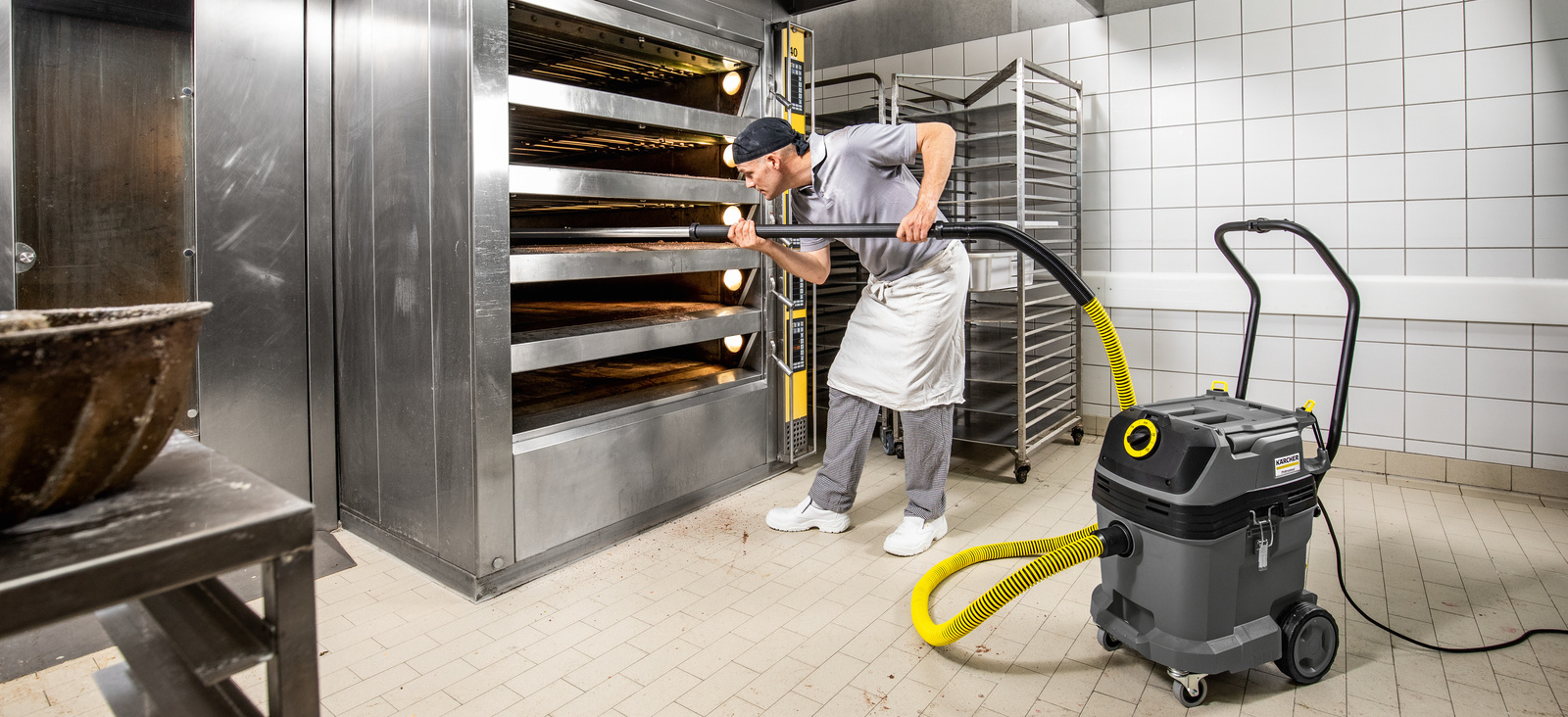
The necessary accessories
Heat-resistant wet/dry vacuums ensure that the hot oven can be immediately cleared of debris and dough residue ready for the next batch. Special bakery vacuums are equipped with appropriate accessories, which include a heat-insulated suction tube, highly heat-resistant suction hoses and an oven nozzle with a scraper. This allows the oven chamber to be cleaned in just a few seconds, so there is hardly any loss of heat.
Floor cleaning in bakery
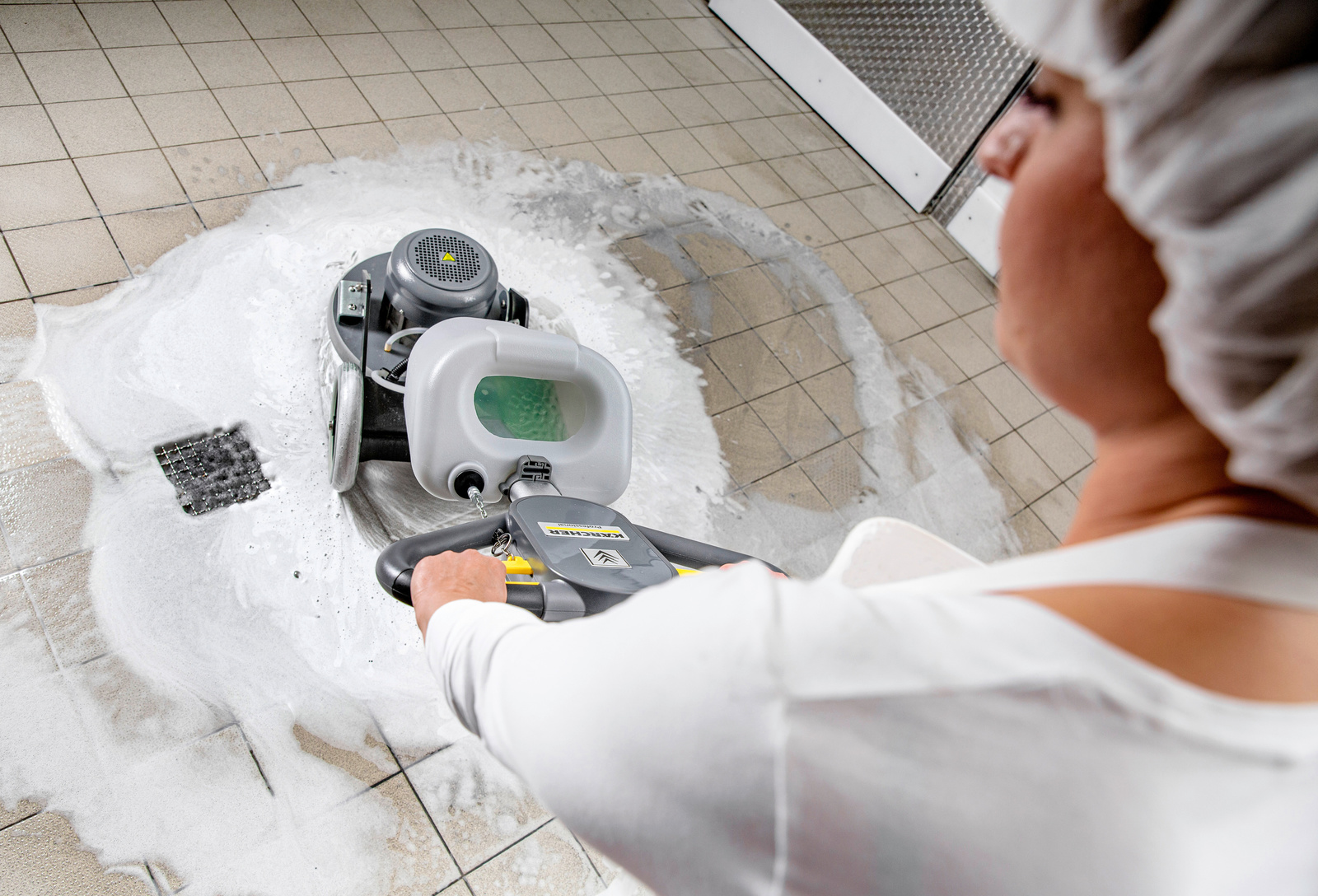
Remove dirt and maintain slip resistance
Floor tiles in food processing areas of the bakery must meet a certain slip resistance (R-value) to ensure a safe working environment. Dry cleaning with a vacuum cleaner should be done regularly to remove loose dirt. However, dirt particles settle very quickly in the depressions of the floor, which is why wet cleaning must also be on the bakery's everyday cleaning schedule. Various machines can support this, although it is important to remove the dirt without leaving any residue in the recesses as well:
- Compact scrubber dryers with soft brushes (white/red); dirty liquid can be suctioned away using a wet/dry vacuum.
- Scrubber dryers for medium-sized surfaces with high-low roller and suction at the front and rear; works with the 1-step method, spreading the cleaning liquid, scrubbing and vacuuming the dirty liquid in one operation.
- Orbital oscillating single-disc machines with brush; works with the 2-step method, spreading and scrubbing cleaning liquid in the 1st step, suction in the 2nd step.
Taking care of the cleaning machines
Day after day, vacuums, sweepers, and scrubber dryers are used to keep supermarkets, industrial plants, warehouses or hotels clean. They pick up vast amounts of dirt and thereby improve the visual impression, create a hygienic environment, contribute to value retention, and avoid slip hazards by ensuring slip resistance. But in order to continuously achieve the cleaning performance and maximize service life, it is not enough to simply empty the dirt container after the work is done. Here is a guide on how to care for and maintain cleaning machines.
Tip – cleaning products must be food grade:
The cleaning agents used must be food grade, i.e. they must not contain any substances that are classified as a food safety concern. When cleaning the bakery oven, care must be taken to alternate between acidic and alkaline agents to safely remove germs. After cleaning, rinse with clear water.
Cleaning porcelain tile
Porcelain tiles are an attractive and very popular flooring material. They are robust, slip resistance, and do not absorb much moisture.
Surface cleaning in the bakery
Dry ice, steam or detergent
Whether it's work surfaces, moulds or kettles, surfaces in the bakery also need to be thoroughly cleaned. Depending on the dough and the degree of soiling, various techniques can be used. Abrasive pads or brushes can be used for manual cleaning. Although the cleaning agents used must also be food-compliant in this case. Alternatively, a steam cleaner can be used, which makes it easier to clean surfaces, especially those in hard-to-reach places, such as rubber folds or crevices.
In addition to these two methods, dry ice blasting has established itself as an effective alternative, especially since there is a compact solution available for smaller businesses that produces dry ice at the touch of a button. The frozen CO2 used converts into CO2 gas immediately after hitting the surface, which is why, unlike other particle blasting methods, no residue remains. The cleaning performance is high and quickly achieved.
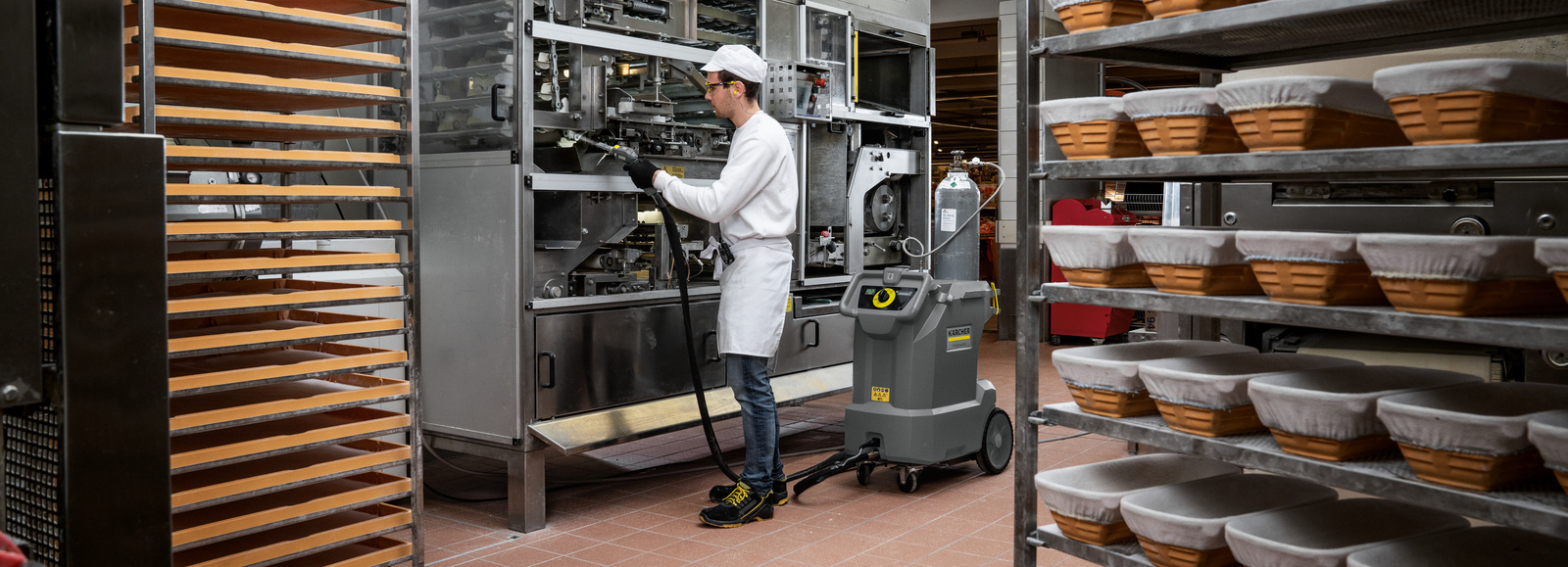
Tip – the right dry ice blaster:
For commercial bakery cleaning, dry ice blasting is an efficient technique for basic facility cleaning. However, in this case, dry ice must be purchased prior to cleaning.
SIDE NOTE 1: Bakery and café - cleaning at a glance
Many bakeries now have a café attached, which also has its own cleaning needs. In addition to sweeping and mopping, cleaning and sanitizing tables after each guest has become more important. In addition, there is the maintenance of the industrial dishwashers or coffee machines to consider. This equipment should be cleaned and maintained according to the manufacturer's instructions and hygiene regulations. In addition, the other surfaces and hard-to-reach areas can be reliably and hygienically cleaned with a steam cleaner.
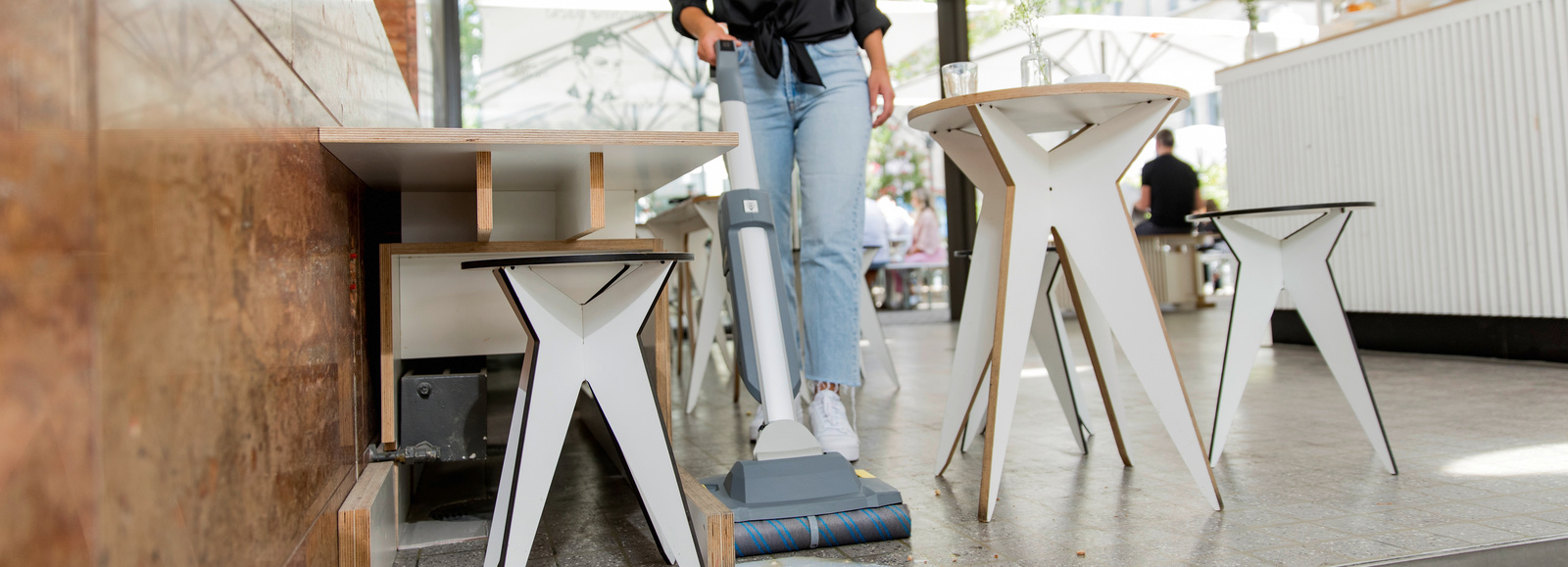
SIDE NOTE 2: Hygiene in the cake shop – specialty area refrigeration
The same HACCP bakery cleaning and hygiene measures apply to any food business. However, there is one special area that, depending on the size of the business, has yet another set of requirements: a freezer room or walk-in fridge. If, to clean the floor for example, a scrubbing machine can be used. The cleaning agent must also be able to withstand temperatures below freezing.
Hygiene in cold rooms: cleaning at low temperatures
Low temperatures, high relevance: freezer rooms and walk-in fridges are found in numerous businesses and are an essential part thereof. Cold rooms provide the correct conditions for storing perishables and sensitive items in hotels, restaurants, in industrial production and in supermarkets. For the cold room and freezer rooms to function properly, specialised cleaning that takes into account the specific conditions needs to be implemented.


